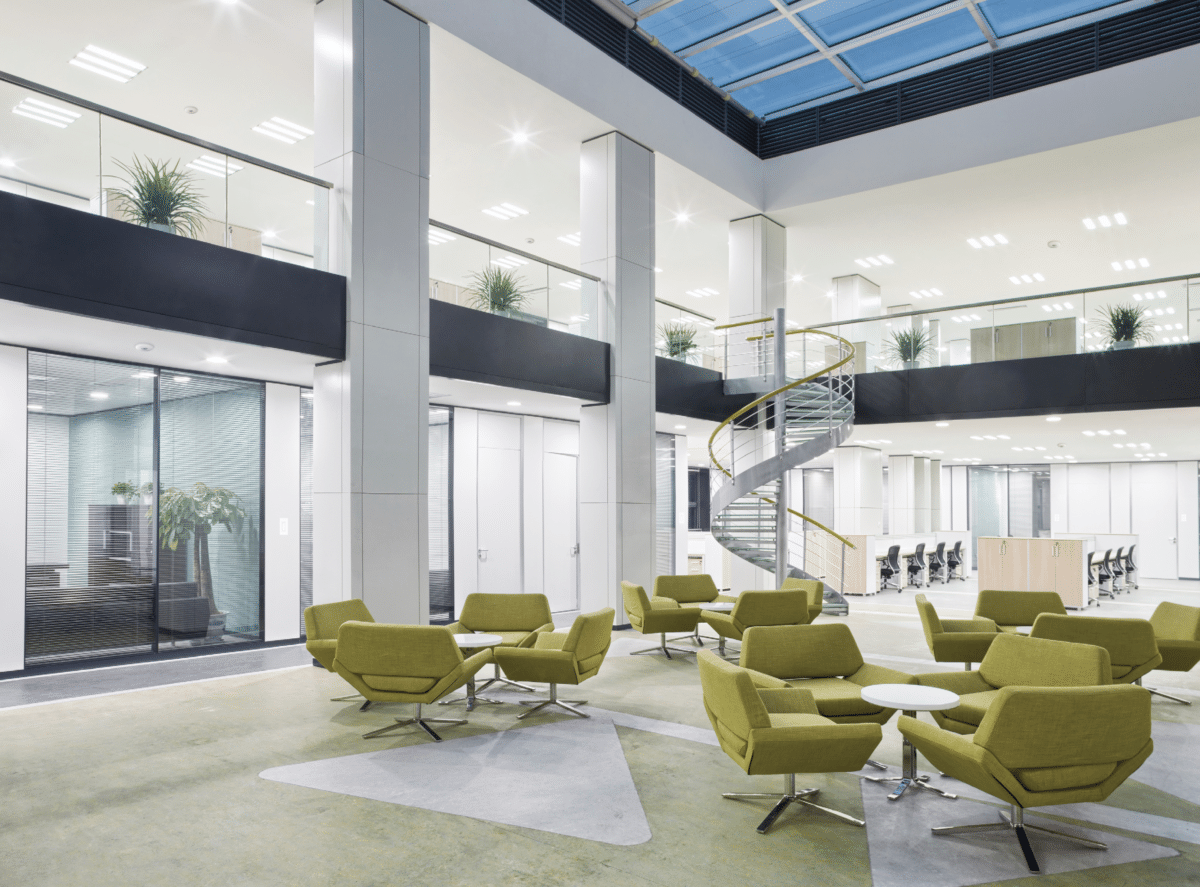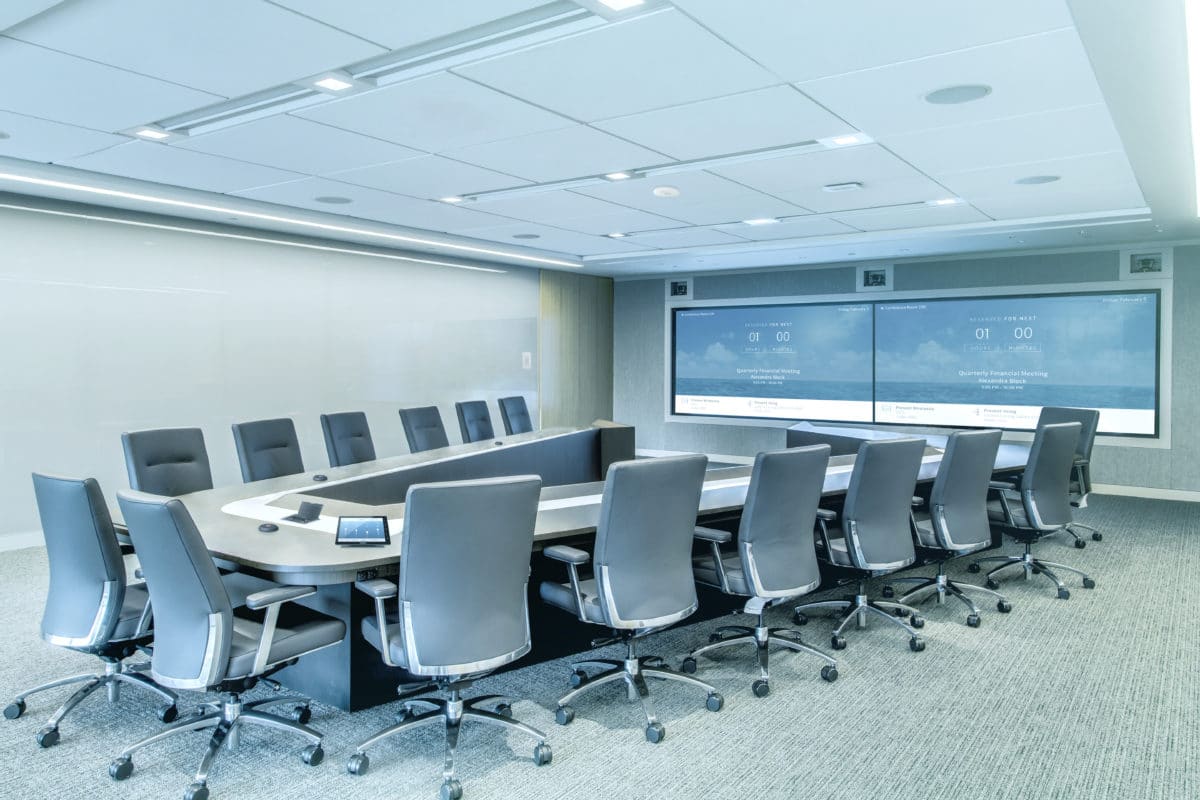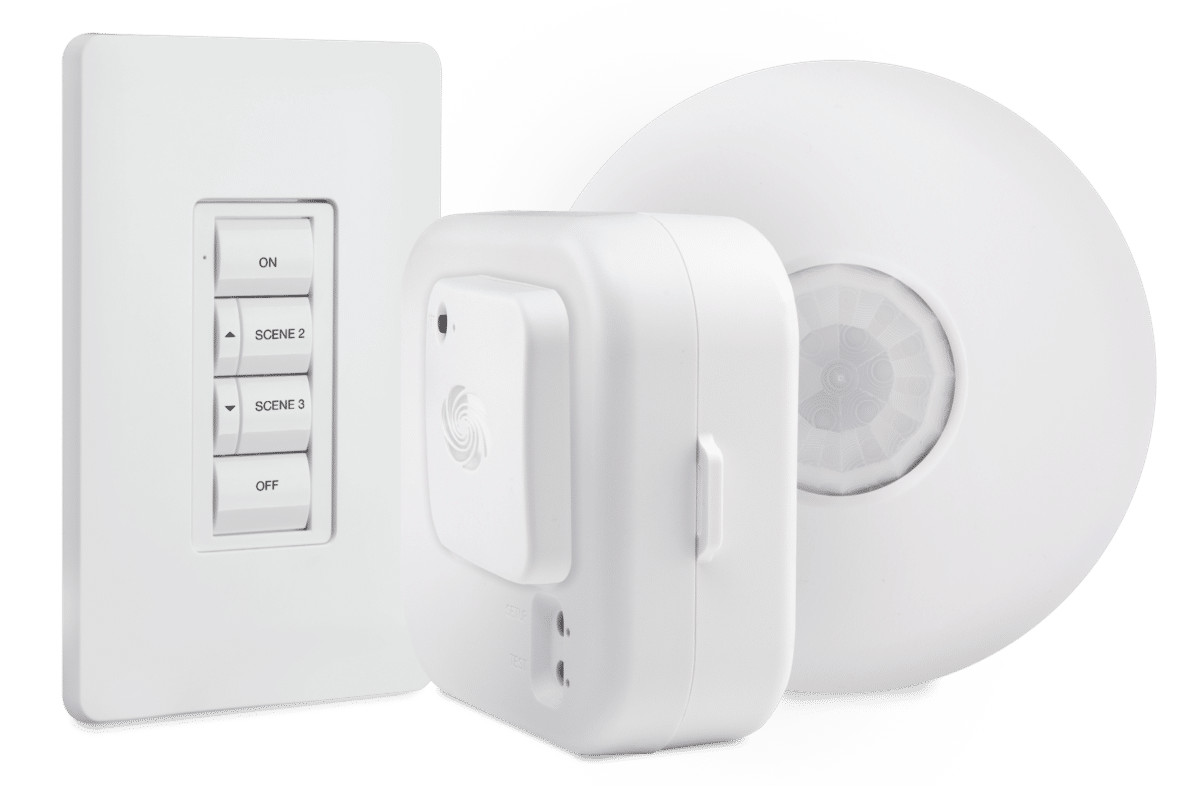
[Photo: Courtesy of Crestron]
How investing in R&D led one company to become a smart lighting pioneer.
“Build a better mousetrap, and the world will beat a path to your door.” This quote from Ralph Waldo Emerson, himself an innovative thinker, is often floated by inventors and innovators reminding themselves that pioneering work is frequently less about the invention of something new and more about making things work better that people already know they need.
Crestron has held this as its informal motto since the late George Feldstein, a self-described tinkerer, founded it in 1969. The company came to life in the field of industrial design, entered into innovative AV products, and evolved to become what’s now the world’s most successful smart-building technology developer, employing more than 2,500 employees worldwide and serving clients as diverse as homeowners in suburban Arizona to the Federal Bureau of Land Management, as well as other individuals, businesses, and governments worldwide.

[Photo: Courtesy of Crestron]
Innovative DNA
To say Feldstein founded Crestron in 1969 is somewhat overstating history. Finding himself unexpectedly unemployed, he began hiring his engineering services out to any company who needed a better product or a better production process, operating out of a small office over a deli in Cresskill, New Jersey. He was all hustle, working on widely divergent projects and assiduously growing his small company one client at a time.
Crestron’s first big boost came in the early 1970s when Feldstein invented a wireless remote controller for audiovisual equipment, cementing Crestron’s reputation as an AV pioneer. He hired his first employee shortly thereafter. In the decades since, he and his team stayed on the leading edge of technology, first in AV and later as they continued to develop products in areas like shading, home automation, and commercial lighting. Today Crestron is on the forefront of the technology that drives smart buildings, automating energy management and continuing to chase ever-greater efficiency in their products and systems.
“Part of Crestron’s innovation isn’t just in its R&D; it’s in the process it wraps around determining which ideas to test and work on.”
—
Evan Ackmann, Crestron
The Life Cycle of an Idea
“I have a direct pipeline to engineering and a short path to development of new products,” says Bill Schafer, executive sales director in Crestron’s commercial lighting division. “I bring back conceptual ideas from the field, ideas customers need on the job.”
Evan Ackmann, Crestron’s technology manager, sees even more opportunities. “An idea can come from anywhere—a sales meeting with a client; an onsite review with a contractor or fellow tradesperson; a blue-sky idea in Crestron’s R&D lab.”
Ackmann says a key to successful R&D is to keep the work customer-focused. “If it’s too far afield from where customers are or where they are going, it won’t be interesting. Part of Crestron’s innovation isn’t just in its R&D; it’s in the process it wraps around determining which ideas to test and work on.” Every idea has to pass through multiple filters before being chosen and, in the end, every investigation is understood as one part or set of parts in an entire system of design.
Once an idea is chosen, the team takes it through iterative design cycles, working from diagrams and prototypes through to final products. The point is to put all their basic assumptions and knowledge on the table and then test each point methodically.
So where do these ideas end up? If it’s a fixture, it’s probably thinner, sleeker, and easier to use. If it’s a process, it’s probably cheaper to install, more efficient to produce, and faster to bring online. Either way, it will use open-standard fixtures and open-standard drivers. This means any standard parts manufacturer can make it and any standard service provider can maintain it, making Crestron systems more economical in the long run for customers.
Sometimes, the ideas don’t end up anywhere at all. “Mr. Feldstein used to have tons of ‘skunkworks’ projects on his desk, projects that never saw the light of day,” says Ackmann, and the owner seems to have passed that attitude along. When a product doesn’t meet the R&D team’s expectations or make it to market, it’s not a failure; it’s an opportunity to learn something new. As long as the team stays mindful of the goal—keeping systems customer-focused and with the business’s long-term goals in mind—Schafer says that work can’t help but end up yielding better products.

Zūm is an innovative, simple lighting control system. [Photo: Courtesy of Crestron]
Bringing Innovation to Life
The Zūm commercial lighting system is one of Crestron’s most recent R&D successes. The team received feedback about how their products affect construction and renovation projects and got to work on something new. Because lighting is one of the last pieces of any project, its installation can make all the difference in bringing a project on time and under budget.
Knowing, as Schafer says, “the biggest hurdle of any commercial lighting job is bringing a job online,” the team set to work on a remedy for this pain point. The result: a preconfigurable, all-in-one wireless smart lighting system whose stand-alone components pair effortlessly with each other, making a Zūm installation faster, less error-prone, and more affordable.
The Bottom Line
As cool as shiny new gadgets are, you still have to keep the lights on, so to speak. “[Feldstein] always had a good balance of ‘Let’s try something new’ and ‘Let’s make sure we’re taking care of the business,’” Ackmann says. What does that mean? Making sure you have the right balance of projects—expanding existing systems, reducing costs, and simplifying already exciting systems, while keeping an eye on the overall vision.
And it’s not just about the fanciest new gadget. “Cost reduction projects can be innovative as well,” Ackmann says, meaning there’s plenty of room to improve systems people already love. Schafer agrees. One example? A lighting system whose sensory pattern is square instead of round, more accurately reflecting the geometry of most rooms; the innovation requires just two sensors instead of five, requiring less energy while at the same being more aesthetically pleasing.
Maintaining an effective R&D portfolio still comes down to being effectively customer-focused, answering questions and providing solutions a few steps ahead of the market. Crestron, now nearly 50 years in the business and earning upwards of $1 billion in sales and continuing to grow, seems to be following its founder’s golden rule. Ackmann says, “Mr. Feldstein always told us, ‘Just do what’s right.’”
Read more about Crestron and catch up on more gb&d lighting stories.
